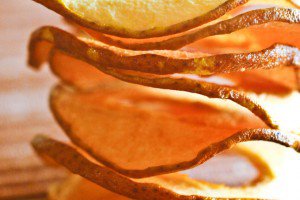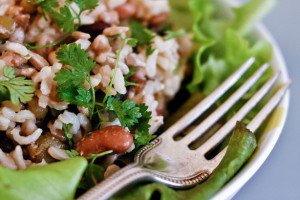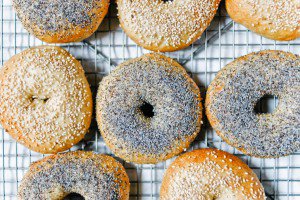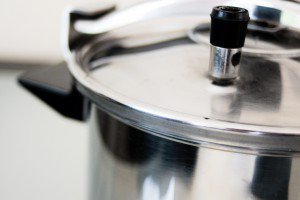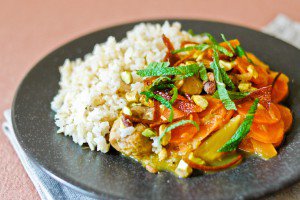We were expecting friends for brunch on Saturday morning, and I decided to bake scones. Not the triangular wedges stuffed with various ingredients often sold in the US, but the classic, round, plain, British kind.
For three years, almost to the day, I’d been sitting on a recipe that my dear friend Chika had shared with me, and which she’d drawn from Anton Edelmann’s out-of-print book, Taking Tea at the Savoy. She had mentioned that this was her go-to scone recipe, and it was the one I intended to try, for a change from my usual yogurt scones.
The dough was quick and easy to assemble — a definite plus for a brunch item — and I rolled it out, according to the instructions, to a thickness of 1.5 cm (2/3 inch). Had I been more fully awake, I would probably have realized that this was a bit thin, and that there was little chance that these would puff up to the kind of height one expects from a scone.
For three years I’d been sitting on a recipe that my dear friend Chika had shared with me, calling it her go-to scone recipe.
Into the oven they went, with a touch of salt and sugar sprinkled across the top, and indeed, while the smell was heavenly and the baking time just right, my scones didn’t quite look like scones.
Of course I served them anyway, with strawberries from Carpentras (hulled and halved an hour or two in advance and macerated with just a little sugar to bring out their juices and concentrate their flavor) and raw milk crème fraîche from the cheese shop — a sort of strawberry shortcake* if you will.
And my not-quite-scones were delicious, flaky and tender and not too sweet, but I refrained from calling them anything, not wanting to linger on the fact that this wasn’t quite the format I’d had in mind.
It’s only a few hours later, after a good nap, that the following lightbulb went on in my brain: just like people make muffin tops using special pans, I had simply baked scone tops, which had the bonus advantage of fitting into the toaster easily for reheating, without slicing them in two and in so doing shedding crumbs at the bottom of the toaster.
Suddenly, I felt a lot better about the whole experience.
So, I’ll let you decide to what thickness you choose to roll out the dough for these — I’m giving you two suggestions in the recipe below — but I hope you’ll give them a try one way or the other: it really is a wonderfully simple and good recipe.
Do you have a go-to scone recipe of your own? And have you ever had a similar conundrum with some concoction of yours, which didn’t quite feel like a success until you found just the right name for it?
* Did you know that the French version of that character is called Charlotte aux fraises?

Have you tried this? Share your pics on Instagram!
Please tag your pictures with #cnzrecipes. I'll share my favorites!
Ingredients
- 220 grams (1 2/3 cups) all-purpose flour
- 1 tablespoon baking powder
- 1/2 teaspoon fine sea salt, plus more for sprinkling
- 60 grams (1/3 cup) unrefined blond cane sugar
- 75 grams (5 tablespoons + 1 teaspoon) unsalted butter, chilled, diced
- 150 ml (1/2 cup + 2 tablespoons) milk (dairy or non-dairy)
- 1 egg yolk, lightly beaten with 1 tablespoon water, for glazing
- unrefined cane sugar in thick crystals, for sprinkling
Instructions
- In a medium mixing bowl, put the flour, baking powder, salt, and sugar. Stir with a whisk to remove any lumps. Add the butter and, using a pastry blender, two knives, or the tips of your fingers, rub it into the flour until the mixture looks like fine crumbs. (You can also do this in a mixer or food processor.)
- Pour in the milk, and stir with a fork until just absorbed. Turn out onto a work surface and knead gently until the dough just comes together into a ball; avoid overworking it. Add a drop more milk if it seems dry, a little more flour if it's too moist.
- Line a baking sheet with parchment paper or a silicon baking mat.
- On a lightly floured work surface, roll out the dough to a thickness of 3 cm (1 1/4 inch) for regular scones, 1.5 cm (2/3 inch) for scone tops. Using a 6-cm (2 1/3 inch) round cookie cutter, stamp out circles of dough and arrange them on the prepared baking sheet.
- Brush the tops with the egg yolk (make sure no eggwash drips down the sides of the scones or they won't rise as well), and sprinkle with a touch of salt and sugar crystals.
- The original recipe recommends letting the scones rest for 15 minutes at room temperature, which I did, but next time I'll follow Chika's advice to chill the scones for 20 to 30 minutes instead.
- Preheat the oven to 200°C (400°F). Bake for 12 to 14 minutes, until golden. Let cool slightly before serving -- they should be warm, but not piping hot -- with cream (clotted cream if available) and fresh berries or berry jam.
Notes
Adapted from Anton Edelmann's book Taking Tea at the Savoy.



